Review Article
Volume 1 Issue 1 - 2016
Orofacial Myofunctional Therapy in Orthodontics - A Review
1Consulting Orthodontist, Private Practice Mumbai India
2Professor, Department of Orthodontics and Dentofacial Orthopedics, Saraswati Dental College, Lucknow, Uttar Pradesh, India
3Private Practice, Mumbai India
4Post Graduate Student. Department of Orthodontics and Dentofacial Orthopedics, Saraswati Dental College, Lucknow, Uttar Pradesh, India
5Intern, Department of Orthodontics and Dentofacial Orthopedics, Saraswati Dental College, Lucknow, Uttar Pradesh, India
2Professor, Department of Orthodontics and Dentofacial Orthopedics, Saraswati Dental College, Lucknow, Uttar Pradesh, India
3Private Practice, Mumbai India
4Post Graduate Student. Department of Orthodontics and Dentofacial Orthopedics, Saraswati Dental College, Lucknow, Uttar Pradesh, India
5Intern, Department of Orthodontics and Dentofacial Orthopedics, Saraswati Dental College, Lucknow, Uttar Pradesh, India
*Corresponding Author: Dr Rohit Kulshrestha, Consulting Orthodontist, Private Practice Mumbai India.
Received: August 13, 2016; Published: November 29, 2016
Abstract
Patients who have problems with their orofacial musculature are given Orofacial Myofunctional Therapy. These troubles encompass a huge amount of disorders including hyperactive mentalis, mouth breathing, tongue thrusting etc. These disorders together are referred to as Orofacial Myofunctional Disorders. During tongue thrusting, the tongue is moved forwardly/laterally while swallowing. Along with this there is improper functioning of lips and facial muscles as well. These problems occur in many cases and should be treated before they cause any sort of malformation of the dental arches. Any abnormality in the functions and postures of the musculature as seen in Orofacial Myofunctional Disorder can have a detrimental effect on dental growth. The purpose of this article is to discuss integral features of Orofacial Myofunctional Therapy as well as its detailed role in orthodontics.
Keywords: Orofacial musculature; Myofunctional therapy; Orofacial disorders
Introduction
An area of specialisation branching out of Orthodontics, Oral Myofunctional Therapy (OMT) is popular for its uniqueness in equipping the orthodontist to help patients in making life enhancing changes. [1] All through the 1800s and early 1900s, numerous dentists correlated the improper tongue position, mouth breathing and other oral habits to discrepancies in occlusion. [2] Dr. Alfred P. Rogers, who wrote an article entitled “Living Orthodontic Appliances”,[3] began the first OMT program in 1918. In the United States, he was one of the first doctors to establish that proper occlusion could be influenced by proper muscle function and tonicity which in turn can be developed by corrective exercises. At present, the International Association of Orofacial Myology Therapy (IAOM) happens to be the only organisation in the world that promotes and develops Orofacial Myofunctional Therapy. [4]
OMT not only helps patients in providing ideal muscle patterns which enforce proper occlusion, it also eliminates various noxious habits which hamper craniofacial development. It rectifies mouth breathing habits and helps in remodelling of the nasal airway for ideal breathing habits. [5] Myofunctional therapy provides the soft tissues to grow to their full potential in the oral cavity. These appliances restrict the abnormal forces or occlusion and prevent deleterious effects on the dentofacial structures. Though the golden time for the orthodontist to plan for OMT is either prior to the onset of fixed therapy or after its conclusion. [6] OMT has to be a part of the treatment planning from the very beginning. Myofunctional therapy must supersede other lines of defence (orthodontic or orthognathic treatment) when it comes to combating the problem of proper facial development.
Types of Orofacial Myofunctional Disorders
- Abnormal thumb, finger, lip, and tongue sucking habits. (Figure 1)
- Inappropriate mouth-open, lips-open resting posture problem. (Figure 2)
- A forward inter-dental rest posture of the tongue problem.
- A forward rest position of the tongue against the maxillary incisors problem.
- A lateral, posterior inter-dental tongue rest posture problem.
Different Types of Orofacial Myofunctional Therapies
The different types of therapies available are [7]
The different types of therapies available are [7]
- Habit Elimination Therapy
- Mini-Myo program for the young child
- Orofacial Myofunctional Therapy
- Special Needs Therapy
- Cosmetic Muscle Toning for facial fitness
Habit elimination therapy cannot be achieved in a single appointment and requires at least three to five visits. This involves combating various habits such as nail biting, thumb, finger, tongue and lip sucking and/or biting and many more.
For young children, the Mini-Myo therapy is beneficial as it helps to develop positive growth factors and eliminates negative growth pressure. In order for it to be successful, the program needs to be fast and relatively entertaining for the child. This program lasts all of three to six months but leaves the child with everlasting results. Encouraging proper breathing, lip seal, palatal tongue posture and bilateral chewing are a few of the aims of the Mini-Myo Program.
Suitable for patients 7 years and above, the orofacial therapy is a 12 month long program that enhances the muscle function and proprioception of facial muscles. The initial eight weeks is considered the intensive period which is succeeded by habituation.
There is a separate program for patients with special needs which is designed to cater to the individual needs and limitations of each patient. The ultimate treatment goals do not differ from those of other programs, just the methods to achieve those goals are modified. A few cases where patients with incorrect muscle patterns need specialised programs are – TMD, cerebral palsy, autism, Downs syndrome etc.
Cosmetic Muscle Toning therapy is aimed more at adults (Figure 3).
As age progresses, there are numerous changes in the orofacial posture that are seen within the 40 odd facial muscles that work in a group. A patient presenting with chronic non nutritive facial muscle habits will not benefit from cosmetic surgery or orthodontic. A better way to achieve equilibrium and develop a desired muscle tone is to change muscle patterns, habits and postures via orofacial myofunctional therapy.
How Does Orofacial Myofunctional Therapy (OMT) Differ from Dental Treatment
Although the theoretical pillars of OMDs lie within dental science, OMT itself cannot be considered dental treatment per say. While dentists and orthodontists primary concern are teeth together relationships, it is the orofacial myofunctional therapies that encompass teeth–apart postures and behaviours. It is also noticed that therapy procedures can create or restore an environment such that normal development of dental tissues can occur. [8] Some of the common appliances used for myofunctional therapy are as follows. Oral screen is used in mouth breathing cases as well as patients with poor control over the orbicularis oris muscle. The oral screen is placed in the buccal vestibule and has a hook at its anterior end. The patient can place his thumb in this hook and can exercise the orbicularis muscle to gain muscle strength and tonicity. The screen also forces the patients to breathe from his nose as the oral airway is covered. Another exceptionally important myofunctional appliance is the Frankel Regulator. It has multiple uses. It is also known as the oral gymnast appliance. It protects the oral structures from the abnormal forces which are created by the surrounding musculature. It helps the cavity to grow from within shielding it from any abnormal forces.
Although the theoretical pillars of OMDs lie within dental science, OMT itself cannot be considered dental treatment per say. While dentists and orthodontists primary concern are teeth together relationships, it is the orofacial myofunctional therapies that encompass teeth–apart postures and behaviours. It is also noticed that therapy procedures can create or restore an environment such that normal development of dental tissues can occur. [8] Some of the common appliances used for myofunctional therapy are as follows. Oral screen is used in mouth breathing cases as well as patients with poor control over the orbicularis oris muscle. The oral screen is placed in the buccal vestibule and has a hook at its anterior end. The patient can place his thumb in this hook and can exercise the orbicularis muscle to gain muscle strength and tonicity. The screen also forces the patients to breathe from his nose as the oral airway is covered. Another exceptionally important myofunctional appliance is the Frankel Regulator. It has multiple uses. It is also known as the oral gymnast appliance. It protects the oral structures from the abnormal forces which are created by the surrounding musculature. It helps the cavity to grow from within shielding it from any abnormal forces.
Orthodontic relapse associated with Orofacial Myofunctional Disorders
The term “relapse” seems to have taken on negative connotation in regard to post orthodontic active treatment (Figure 4).
The term “relapse” seems to have taken on negative connotation in regard to post orthodontic active treatment (Figure 4).
The reason behind this is the fact that orthodontists themselves have not displayed an adequate understanding of the concept of relapse and the factors that lead to it. More often than not, it is the tongue that is blamed for unexplained changes in the dentition, post treatment. [9] The key to understanding relapse is to appreciate retention. Retention is that phase of orthodontic treatment that begins after the removal of orthodontic appliances.
All orthodontic treatment must be succeeded by one form of retention or the other. [10] The reasons for this are – (1) reorganisation of the gingival and periodontal tissues after active orthodontic treatment, requires time; (2) Any additional growth taking place after the orthodontic treatment, may lead to a change in teeth and jaw positions; and (3) the teeth that have been moved may be relocated such that they lie in unstable positions, thus allowing soft tissue pressures to encourage relapse.
In order to prevent relapse, it is important for the orthodontist to understand and identify the problems associated with relapse. In some cases, correction of lip and tongue positions play an important role in the retention process. Studies conducted by Ingervall and Eliasson [11] (1982) as well as Barber and Bonus [12] (1975) have revealed the usage of orofacial myofunctional therapy for numerous patients in their growing age wherein the treatment was completed without the use of any fixed orthodontic appliance. All in all, it is essential to understand that the cause of relapse is multifactorial and the identification of such factors begins during the initial treatment planning phase along with careful and continuous evaluation of patient records right through. [13]
Future of Orofacial Myofunctional Therapies
One of the main reasons for the continuous evolution of orofacial myofunctional disorders is so that OMTs can be used in multidisciplinary activities. It is a field that can change and mould itself in accordance to the research and clinical application it may find its way into. In case of airway interference, efforts are made to establish and maintain a pattern of breathing that is nasal. For this, OMTs require a team approach in order to understand and comprehend the individual problem that the patients may exhibit. [14]
One of the main reasons for the continuous evolution of orofacial myofunctional disorders is so that OMTs can be used in multidisciplinary activities. It is a field that can change and mould itself in accordance to the research and clinical application it may find its way into. In case of airway interference, efforts are made to establish and maintain a pattern of breathing that is nasal. For this, OMTs require a team approach in order to understand and comprehend the individual problem that the patients may exhibit. [14]
A multidisciplinary approach is required to address the various opportunities and challenges associated with orofacial myology. It seems obvious that many orthodontists have been unimpressed by orofacial myology because of what is said, in the absence of actually observing what can be accomplished clinically. [15] Various orthodontic programs should target the studying of morphology of a patient who has tongue and lip functional and postural variation as well as the degree to which OMT can help in contributing to the stability of orofacial-pharyngeal areas. [16]
Although it is only normal for dentists to focus on the functional relationships of teeth and jaws, many patients are very concerned about their appearances and it is these concerns that should be addressed. [17] Other than that, correction of various lip position and competence abnormalities, as well as resting tongue posture are all things that any clinician aims to achieve while treating his or her patient. [18]
It is understood, that besides the correction of the above mentioned discrepancies, it is essential to include speech treatments in the overall treatment plan. Patient compliance and motivation is absolutely essential in orofacial myofunctional therapies since most of the exercises that have to be done are repetitive and are to be practiced at home. A team approach needs to be adopted to solve compliance problems. [19]
Discussion
Few important studies have been mentioned below, they will give us a better view point on how OMT is effective and to show its results with control groups. Review of the following study focussed on determining the effectiveness of OMT alone (control group) and in combination with orthodontic treatment (experimental group). The study [20], assessed patients with malocclusion, deficiencies in the vertical, sagittal and transverse dimensions. It was seen that patients with abnormal orofacial musculature and severe malocclusions can be treated with both forms of therapy (OMT + Orthodontics. Researchers found that in patients with hyperactive orbicularis oris and anterior open bite [21], OMT in combination with orthodontic treatment was more successful in the correction of lip incompetence than the former alone. Although their studies favoured the use of OMT alone was beneficial, the authors reported that the decision regarding use of OMT alone or with orthodontic treatment is inconclusive and more studies are needed to analyse the same.
Another study was reviewed to focus on the effectiveness of OMT as a complement to maintaining closure of anterior open bite flowing orthodontic treatment or retreatment. [22] It was seen that the relapse of open bite in the experimental group treatment with OMT as well as orthodontics (0.48 ± 0.8 mm) was much less that in the control group treated with orthodontics alone (3.38 ± 1.3 mm) (P < 0.0001). Thus, for anterior open bite, authors indicated the use of both forms of therapy. It was also stressed that the documentation of oral and functional habits of the patient are of utmost importance. This helps in determining the treatment plan.
Trawitzki., et al. [23] analysed and documented the effect of orthodontics combined with orthognathic surgery and OMT on the masseter muscle thickness in patients with Class III deformity. The authors concluded that treatment with OMT combined with orthodontics showed an improvement in masseter muscle thickness in patients post orthognathic surgery in comparison to the baseline and control group. Since one third of the population is in need of orthodontic treatment, it is necessary to carry out further studies with more rigorous methods. [24] These include randomized control trials which must be conducted to determine the actual effectiveness that OMT has as an adjunct to orthodontic treatment.
Conclusion
Major life enhancing changes are seen in patients who had previously undergone Oral Myofunctional Therapy. However, there remains a demand for better studies designs with higher standard of quality, so as to establish strong scientific evidence which speaks in favour of this form of combined treatment therapy. Working with orofacial myofunctional disorders continues to represent a challenging and exciting area of clinical endeavour. It is a field that is continually evolving. Efforts to consider orofacial myofunctional variations in a broader perspective should result in added recognition of orofacial myofunctional therapy, while also improving patient care at the same time.
References
- Mason R.M. “A retrospective and Prospective View of Orofacial Myology”. International Journal of Orofacial Myology 31 (2005): 5-14.
- Fujiki, T., et al. “Relationship between maxillofacial morphology and deglutitive tongue movement in patients with anterior open bite”. American journal of Orthodontics & Dentofacial Orthopedics 125.2 (2004): 160-167.
- Rogers A.P. “Exercises for the development of the face, with a view to increasing their functional activity”. Dental Cosmos 60:857.
- Van Norman R.A. “Helping the Thumb-sucking Child, 1999, Avery Publishing Group, Garden City Park, New York”.
- Marasa F.K. “An Explanation of the Effect That Two Different Swallowing Patterns Have on Cranial Articular Motion”. The Journal of the American Academy of Gnathologic Orthopedics 25.1 (2008): 10.
- Ray J. “Orofacial Myofunctional Deficits in Elderly Individuals“. International Journal of Orofacial Myology 32 (2006): 22-31.
- Hanson M.L and Mason R.M. “Orofacial Myology: International Perspectives”. C.C. Thomas, Springfield, IL, 2003.
- Mason, R. Orofacial myology: “Current trends [Special Issue]”. International Journal of Orofacial Myology 14, 1, March, 1988.
- Benkert KK. “The effectiveness of orofacial myofunctional therapy in improving dental occlusion”. International Journal of Orofacial Myology 23 (1997): 35-46.
- Smithpeter J and Covell D Jr. “Relapse of anterior open bites treated with orthodontic appliances with and without orofacial myofunctional therapy”. American Journal of Orthodontics and Dentofacial Orthopedics 137.5 (2010): 605-614.
- Ingervall B and Eliasson G. “Effect of lip training in children with short upper lip”. Angle Orthodontist. 52.3 (1982): 222-233.
- Barber T. K and Bonus H. W. “Dental relationships in tongue-thrusting children as affected by circumoral myofunctional exercise”. Journal of the American Dental Association 90.5 (1975): 979-988.
- Thiier U and Ingervall. “Pressure from the lips on the teeth and malocclusion”. American Journal of Orthodontics 90.3 (1986): 234-242.
- Berkinshaw ER., et al. “The effect of methodology on the determination of nasal resistance” American Journal of Orthodontics. 92.4 (1987): 329-335.
- Cooper J.S. “A comparison of myofunctional therapy and crib appliance effects with a maturational guidance control group”. American Journal of Orthodontics 72.3 (1977): 333-334.
- Hahn V and Hahn H. “Efficacy of oral myofunctional therapy”. International Journal of Orofacial Myology 18 (1992): 21-23.
- Klocke A., et al. “Influence of orthodontic appliances on myofunctional therapy”. Journal of Orofacial Orthopedics 61.6 (2000): 414-420.
- Felício CM., et al. “Otologic symptoms of temporomandibular disorder and effect of orofacial myofunctional therapy” Cranio. 26.2 (2008): 118-125.
- Korbmacher HM., et al. “Evaluation of a new concept of myofunctional therapy in children”. International Journal of Orofacial Myology 30 (2004): 39-52.
- Daglio S., et al. “Orthodontic changes in oral dyskinesia and malocclusion under the influence of myofunctional therapy”. International Journal of Orofacial Myology 19 (1993): 15-24.
- Daglio SD., et al. “Treating orofacial dyskinesia with functional physiotherapy in the case of frontal open bite”. International Journal of Orofacial Myology 19 (1993): 11-14.
- Smithpeter J and Covell D Jr. “Relapse of anterior open bites treated with orthodontic appliances with and without orofacial myofunctional therapy”. American Journal of Orthodontics and Dentofacial Orthopedics 137.5 (2010): 605-614.
- Trawitzki LV., et al. “Masseter muscle thickness three years after surgical correction of class III dentofacial deformity”. Archives of Oral Biology 56.8 (2011): 799-803.
- Dias PF and Gleiser R. “Orthodontic treatment need in a group of 9-12-year-old Brazilian schoolchildren”. Brazilian Oral Research 23.2 (2009): 182-189.
Citation:
Rohit Kulshrestha., et al. “Orofacial Myofunctional Therapy in Orthodontics - A Review”. Oral Health and Dentistry 1.1 (2016): 50-55.
Copyright: © 2016 Rohit Kulshrestha., et al. This is an open-access article distributed under the terms of the Creative Commons Attribution License, which permits unrestricted use, distribution, and reproduction in any medium, provided the original author and source are credited.



































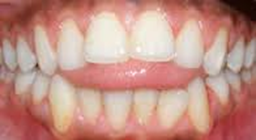
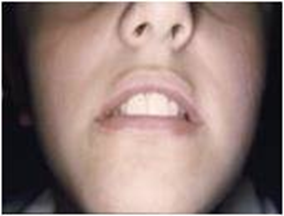
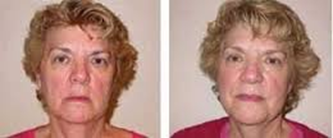
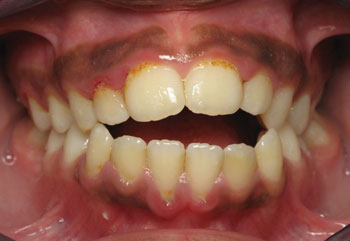
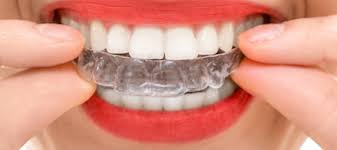
 Scientia Ricerca is licensed and content of this site is available under a Creative Commons Attribution 4.0 International License.
Scientia Ricerca is licensed and content of this site is available under a Creative Commons Attribution 4.0 International License.